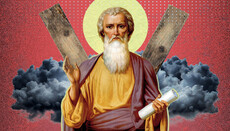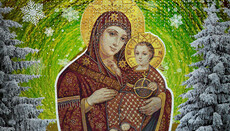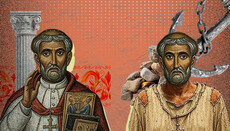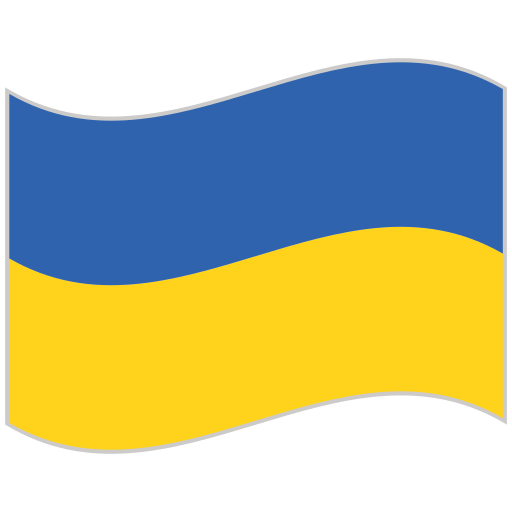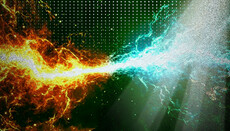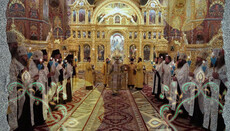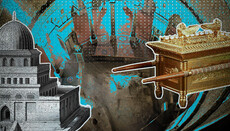Theological meaning of the "Unburnt Bush" icon
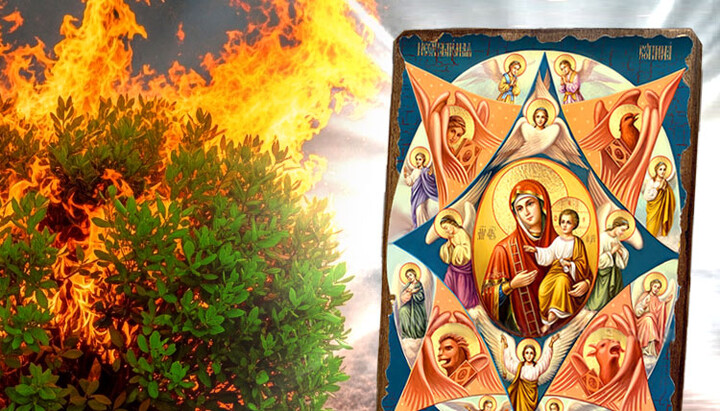
We analyze the complex symbolism of one of the most famous icons of the Theotokos: Old Testament prophecies, Christology, and the dogma of Ever-Virginity.
The icon of the Mother of God "Unburnt Bush" is closely related to the icon "Christ in Majesty". On both, we see an eight-pointed star, which symbolizes the Eighth Day of Creation. The star is a symbol of Christ, as in the Bible He is called "a star out of Jacob" (Num. 24:17). At the same time, according to the Akathist, the Mother of God is "the Star that reveals the Sun". For this reason, the star can be a symbol of both Christ and the Mother of God.
The idea of the Unburnt Bush is expressed not so much through the star as through the Mother of God herself, who is the very Burning Bush.
On the icons of the "Unburnt Bush" and "Christ in Majesty", animals, symbols of the evangelists, are depicted in the red corners of the back star. This corresponds to the vision of the prophet Ezekiel.
The icon allows us to clearly see the uniqueness of the Orthodox veneration of the Mother of God, as it repeatedly touches on the theme of Christology. On the icons of the "Bush", Christ is depicted not only as the young Emmanuel sitting on the lap of the Mother of God, holding a prophetic scroll, but also as the High Priest in archbishop's vestments and simultaneously as the King. This is an illustration of the threefold ministry of Christ.
Old Testament prototypes of the Mother of God
On most icons of the "Bush", four scenes are presented in the corners. If "read" clockwise, starting from the top right, they symbolize:
- The Vision of Isaiah — a branch from the root of Jesse (Isa. 11:1);
- The Dream of Jacob — the ladder at Bethel (Gen. 28:10–22);
- The Vision of Ezekiel — the closed gates (Ezek. 44:1–3);
- The Vision of Moses — the Unburnt Bush, a thorn bush burning but not consumed (Ex. 3).
All these images are Old Testament prototypes of the Most Holy Theotokos. In many "Unburnt Bush" icons, a mountain is depicted in front of the Mother of God’s chest, from which a stone separated "not by human hands" (Dan. 2:34). Sometimes a structure, symbolizing the temple and the dwelling place of God, is shown on the mountain. In this way, the icon itself unites a whole series of Old Testament motifs associated with the Mother of God. These same symbols permeate the church hymns. For example, in the Irmos of the third tone of the Monday Matins canon, it is sung:”
"On Mount Sinai, Moses saw You in the bush, the fire of Divinity unburning, conceived in the womb; Daniel saw You as the uncut mountain, the rod sprouted; Isaiah cried out, from the root of David."
Saint Ephrem the Syrian, in his sermon on the Feast of the Transfiguration of the Lord, says:
"God the Word dwelt in the womb of the Virgin herself, and in it, the fire of His Divinity did not at all burn the members of the body of the Ever-Virgin, but preserved Her unharmed for the time of nine months."
The dogma of Ever-Virginity in hymnography
All these motifs, found in the works of the holy fathers and Orthodox hymnography, figuratively express one idea: Mary, the Mother of the Lord, is the Theotokos and Ever-Virgin, meaning she remained a Virgin before, during, and after the birth of Christ. Christ was born "not of blood, nor of the will of the flesh, nor of the will of man, but of God" (John 1:13). The Bush is a symbol that the "fire of Divinity" did not burn the Mother of God: She gave birth as a Virgin and remained a Virgin.
This understanding also includes the prototypes of "the unseeded land" and "the closed gates", through which only the Lord can pass. Since the Lord entered Her "womb", this womb became "holy" and accessible only to God. Therefore, the assertion of the inviolate virginity of the Mother of God is based not on notions of moral perfection but on theological truth. Christ took His flesh and human nature from the Virgin Mary, and did not simply pass through Her as through a channel, as heretics taught. She, having given birth to God, became a bridge between heaven and earth, fulfilling the image of Jacob's ladder (see Gen. 28), upon which not only God Himself descends from heaven but also angels.
The Mother of God is called not just Heaven, but also "Wider than the Heavens", because She contained in Her body the Infinite and Incomprehensible. In Her, the mystery is accomplished: "the finite contains the infinite", "the Uncontainable is contained in the womb".
From Christology to the theology of the Mother of God
The distinction between hymns in honor of Christ and praises to the Mother of God in Orthodox hymnography is blurred. In the Theotokion troparia, Christology is celebrated to a far greater extent than in poetry directly addressed to Christ. It is in the Theotokion texts that the two natures in Christ and the miracle of the Incarnation are discussed. For example, in the Theotokion sticheron of the 6th tone, sung at the small entrance of Vespers on Saturday, it is said:
"Who will not glorify You, O Most Holy Virgin? Who will not hymn Your most pure childbirth? The Only-begotten Son, Who shone timelessly from the Father, ineffably came forth incarnate from You, O Pure One. God by nature, He became man for our sake, not divided into two persons, nor turned away from Your commandments. By their intercessions, have mercy on us."
Based on the close connection between Christ and the Mother of God, praises to the Savior are transferred to the Virgin Mary. From the hymn ‘It is Truly Meet and Tight’" before the Eucharistic prayer arose the most beautiful hymn of praise in honor of the Mother of God — "It is Truly Meet":
"It is truly meet to bless you, O Theotokos, ever-blessed and most pure, and the Mother of our God. More honorable than the Cherubim, and more glorious beyond compare than the Seraphim, without defilement you gave birth to God the Word. True Theotokos we magnify you!"
In the second half of the hymn, the image of the Unburnt Bush is also described. For Orthodox consciousness, the fact that the Mother of God gave birth to God without being harmed, and that the "fire of Divinity" did not burn her womb, is one and the same truth. The Mother of God is called "More honorable than the Cherubim, and beyond compare more glorious than the Seraphim", because, according to Orthodox teaching, the Cherubim and Seraphim stand closest to God among all the angelic orders, and the Mother of God stands even closer, having "given birth to God the Word" and become His vessel.
Thus, "Unburnt Bush" icon is a theological transference of elements of Christology onto His Mother, who was granted the honor of containing God in her body. This is the main theological meaning of the icon.
